Zalman HD-160 and Accompanying Products
by Joshua Buss on March 31, 2006 12:05 AM EST- Posted in
- Cases/Cooling/PSUs
HD-160 Case - Interior (cont'd)
To take a closer look at the HD-160, we removed components and examined them individually. First, here's a picture of the multi-card reader/port pieces, which (thankfully) uses standard USB connections and is mounted sturdily by several bolts.
The cage itself that was removed to get this picture is pretty standard, which like many other HTPC cases has to be completely removed to install drives, unfortunately. One nice feature is the use of soft rubber grommets to absorb vibrations from the installed hard drive on top.
The new Zalman case's method of stealthing the optical drive is to replace the drive tray's bezel with an included black aluminum piece, and while the fit is pretty good and the end result can be great looking, the double-sided adhesive tape doesn't always guarantee a perfect mount and could be problematic if not attached perfectly the first time.
With the top of the other hard drive mounting unit removed, we can see how these drives are held in place.
The six visible metal pins serve to anchor one side of the drive, while foam pads still get the majority of the pressure from the mount to help control noise. The top of the cage uses the same grommets mentioned before, and after the drive is bolted to the top piece, the entire unit simply screws down at the four slightly recessed corners that are visible here. Besides the somewhat tricky task of lining up the two screws on the front side of the cage (we found the use of a magnetic screwdriver imperative), the installation is on par with other HTPC designs, and ultimately, the slight difficulty of installation is offset by the low operating noise and good cooling performance of the design.
The installation of the power supply is quite similar to other designs that we've looked at before, with a separate plate first attaching to the supply, which then screws into the case. The plate itself is symmetrical with respect to the case's mounting points, so any compatible power supply can be turned either direction in the HD-160.
Something rather interesting about the installation instructions of the HD-160 is the fact that they suggest a different orientation of their own power supply, the ZM460-APS, than they suggest for other supplies. The instructions have the supply's large intake fan oriented towards the side vents, most likely due to the fact that often the ZM460-APS is able to keep its fan still or barely rotating, and if it was pointed towards the inside of the chassis, warm air could be drawn through the supply into the case.
One more soft pad is used again to help dampen possible vibrations, this time from the fan in the power supply. Also worth mentioning is that the whole power supply unit area is nice and spacious, and should work fine even with larger units.
Before getting to the details of the rest of the installation process, it should be noted that Zalman includes a versatile molex adapter with the case that allows the user to run the two rear exhaust fans at either 5v or 12v, depending on the desired cooling performance/noise level. Little inclusions like this are certainly welcome additions to any higher-end chassis; it's always nice to have options.
To take a closer look at the HD-160, we removed components and examined them individually. First, here's a picture of the multi-card reader/port pieces, which (thankfully) uses standard USB connections and is mounted sturdily by several bolts.
The cage itself that was removed to get this picture is pretty standard, which like many other HTPC cases has to be completely removed to install drives, unfortunately. One nice feature is the use of soft rubber grommets to absorb vibrations from the installed hard drive on top.
The new Zalman case's method of stealthing the optical drive is to replace the drive tray's bezel with an included black aluminum piece, and while the fit is pretty good and the end result can be great looking, the double-sided adhesive tape doesn't always guarantee a perfect mount and could be problematic if not attached perfectly the first time.
With the top of the other hard drive mounting unit removed, we can see how these drives are held in place.
The six visible metal pins serve to anchor one side of the drive, while foam pads still get the majority of the pressure from the mount to help control noise. The top of the cage uses the same grommets mentioned before, and after the drive is bolted to the top piece, the entire unit simply screws down at the four slightly recessed corners that are visible here. Besides the somewhat tricky task of lining up the two screws on the front side of the cage (we found the use of a magnetic screwdriver imperative), the installation is on par with other HTPC designs, and ultimately, the slight difficulty of installation is offset by the low operating noise and good cooling performance of the design.
The installation of the power supply is quite similar to other designs that we've looked at before, with a separate plate first attaching to the supply, which then screws into the case. The plate itself is symmetrical with respect to the case's mounting points, so any compatible power supply can be turned either direction in the HD-160.
Something rather interesting about the installation instructions of the HD-160 is the fact that they suggest a different orientation of their own power supply, the ZM460-APS, than they suggest for other supplies. The instructions have the supply's large intake fan oriented towards the side vents, most likely due to the fact that often the ZM460-APS is able to keep its fan still or barely rotating, and if it was pointed towards the inside of the chassis, warm air could be drawn through the supply into the case.
One more soft pad is used again to help dampen possible vibrations, this time from the fan in the power supply. Also worth mentioning is that the whole power supply unit area is nice and spacious, and should work fine even with larger units.
Before getting to the details of the rest of the installation process, it should be noted that Zalman includes a versatile molex adapter with the case that allows the user to run the two rear exhaust fans at either 5v or 12v, depending on the desired cooling performance/noise level. Little inclusions like this are certainly welcome additions to any higher-end chassis; it's always nice to have options.
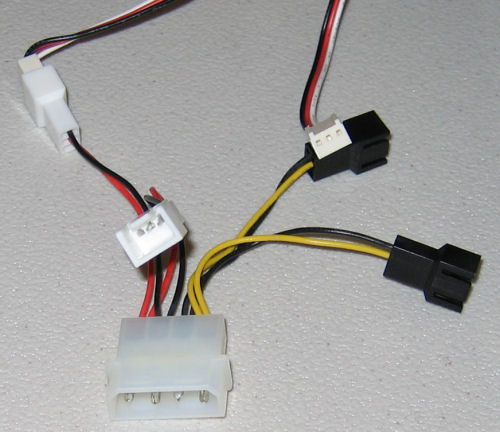


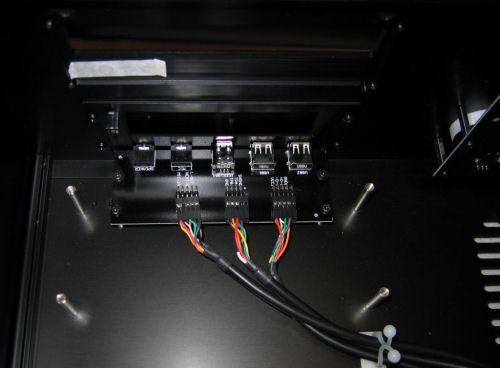
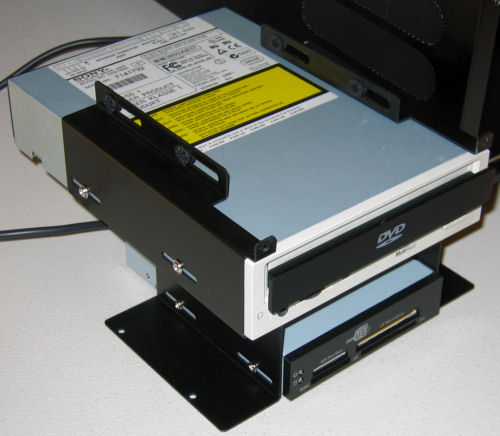
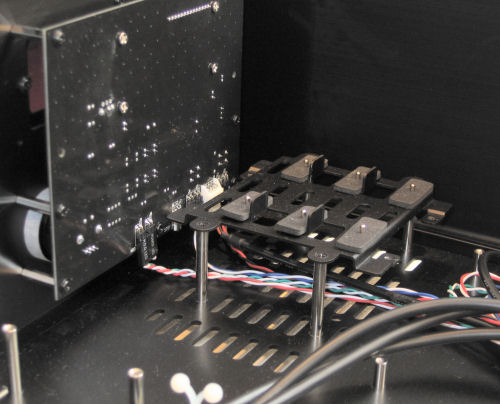
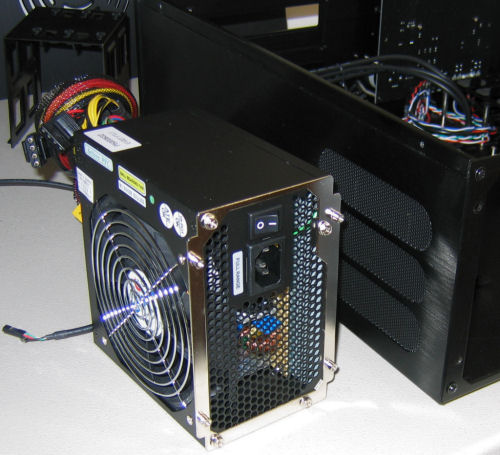
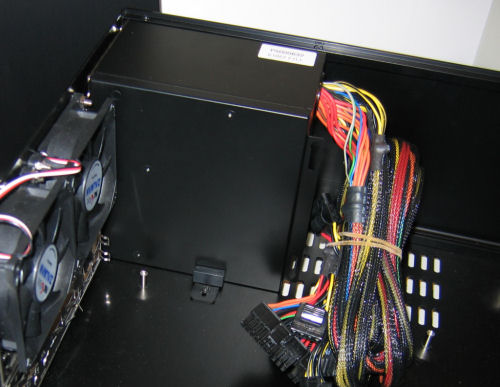








48 Comments
View All Comments
Stele - Monday, April 3, 2006 - link
Good post, well said.As for using BJTs in audio power amps, I agree with you. It's a good thing... properly selected and implemented, they're generally known to give better sound than FETs (especially in the form of substantially lower distortion and noise figure), as much as triodes/vacuum tubes have excellent distortion and noise characteristics. I used an all-discrete, all-BJT design for an audio power amp competition several years ago; trickier to get right but ultimately satisfying sound quality compared to some designs that took the short cut and dropped in power-amp ICs (mostly from ST, IIRC). :P
Stele - Sunday, April 2, 2006 - link
Hi topher42,Now how did that slip by me... yes, you're perfectly right. Was trying to be careful not to make that mistake but in the end still tripped on that common misuse of the term. Thank you for pointing it out, I stand corrected :)
20kW amps??? That's powerful alright, no surprise about being a headache to keep cool :)
I mentioned TO-3's along with the other packages to illustrate my point that discrete MOSFETs don't always have to come in 3-legged form, though you're right that they're a big too big for motherboard mobos.
I see your point, and it kind of explains certain things nowadays... oh well, gone were the hands-on approach of the good old days :P
Hi Clauzii
As with topher42 you're right that a discrete MOSFET is not an 'IC', srictly-speaking. I really must be more careful not to mix them up!
However, a MOSFET is not really a "constructional technique in a transistor"; rather, it is a transistor (the most common type of FET, of which there are several kinds) that is made using a particular constructional technique (metal/polycrystalline on gate oxide on silicon etc as opposed to bipolar junctions on BJTs) and that works using a particular method of operation (field effect, as opposed to BJTs). :)
Hi AnnonymousCoward,
Granted not the most common in the objective sense, and you may not need to work with them much unless you're involved in, say, power circuitry design. After all, you did mention that you normally use BJTs more. :)
However, it is really common enough in terms of availability and application that it's about universally known, like the 'regular' BJT, especially in (but not limited to) the semiconductor community/industry. Besides, major semiconductor companies sport hundreds to more than a thousand of such devices in their product lists and they're used in an enormous number of electronic devices, from handphones to motherboards to power amplifiers (audio and electrical).
MOSFETs are used in many (dare I say most?) modern power supply applications in electronic devices these days, especially in switch-mode (as opposed to linear) power supplies. Briefly, the MOSFETs in such power supplies are used as digital 'switches' that are rapidly turned on and off a hundred or more times a second to provide power - the amount of power required is varied by changing their duty cycle (how long they stay ON or OFF). This is a whole field by itself, so no-one can blame you if you're not thoroughly familiar with it (I don't pretend to be either! :P).
Relays are used as mechanical switches that isolate two or more circuits yet allow one to control the other(s). A common (but certainly not only use is to allow a low-voltage low-current circuit to control/switch a high-voltage high-current circuit, e.g. when you use a battery-powered light-sensing circuit to turn your room light on.
Opto-couplers and FETs (in the form of solid-state relay ICs) can do the job too, but relays are cheap, readily available, fairly reliable, easy to troubleshoot and generally can handle more current and voltage than a semiconductor counterpart. Of course, relays are bulky, noisy, can introduce damaging surges in the energising circuit when switching on and off (due to the inductance of the coil), and cannot switch as fast as a semicon equivalent, but that's the way it is :)
Clauzii - Sunday, April 2, 2006 - link
To repeat myself:MOS-FET is a constructional technique in a transistor, be it a small one inside a IC or a single "gate" in a device.
An IC is more than one component in the same housing. The MOS-FETs used on mobos are NOT ICs, but Field Effect Transistors made using Metal On Silicon process.
Clauzii - Sunday, April 2, 2006 - link
PS: When do DT check up on their f...... Forum System - it´s flawed like h... :)Clauzii - Sunday, April 2, 2006 - link
To repeat myself:<b>MOS-FET is a constructional technique in a transistor, be it a small one inside a IC or a single "gate" in a device. </b>
An IC is more than one component in the same housing. The MOS-FETs used on mobos are NOT ICs, but Field Effect Transistors made using Metal On Silicon process.
topher42 - Sunday, April 2, 2006 - link
stele."especially since a MOSFET is an IC."
What are you calling integrated?
Most power fets are one transistor
and nothing else in the package.
Not much integration.
Most of the 6 pin devices I have used
were for low current noise differential
inputs were you wanted identical devices
and temperature tracking.
And I have used the big packages when
designing and building 20 kilowatt
amplifiers. Pain to cool....
I was pointing out that the bios would
have a problem controlling the cpu voltage
without power fets. to3's would be a
little big for that app.
The EE's I deal with that don't know a
fet from an asic are usually the digital
designers designers that never get closer
to a part than their VHDL code.
Clauzii - Saturday, April 1, 2006 - link
Nice with a guy that knows what he´s talking about :)Also, almost all amplifiers for professional use (including old estimated Hafler P500, Crown, Ampeq etc.) are build whith MOS-FETs in single TO-3 (metal) etc. housings.
MOS-FET is a constructional technique in a transistor, be it a small one inside a IC or a single "gate" in a device.
nullpointerus - Saturday, April 1, 2006 - link
I'd just like to put my vote in for "geeky electrical thingies."Seriously, does this matter to 99% of the readers?
SonicIce - Friday, March 31, 2006 - link
It's official! Joshua Buss of Anandtech does bad case wiring jobs!JoshuaBuss - Friday, March 31, 2006 - link
Believe it or not, I don't do 'great' wiring jobs inside cases for testing as a matter of choice. Typically, users don't spend enough time routing cables neatly enough to stop all airflow blocking problems, thus I feel it's more accurate to actually leave a little cable clutter behind. Besides, if I spend much more time on it than the average user would, I'm not providing a good sense of how easy it is to do the cable management - I'd simply be showing off. The best way to give people a sense of how the case is laid out is to spend roughly the same amount of time in each case trying to clean them up a bit and see how far I get. With this case, I was able to get the majority of the mess out of the way with almost no effort, which is a testamanet to the ample space inside the HD-160.